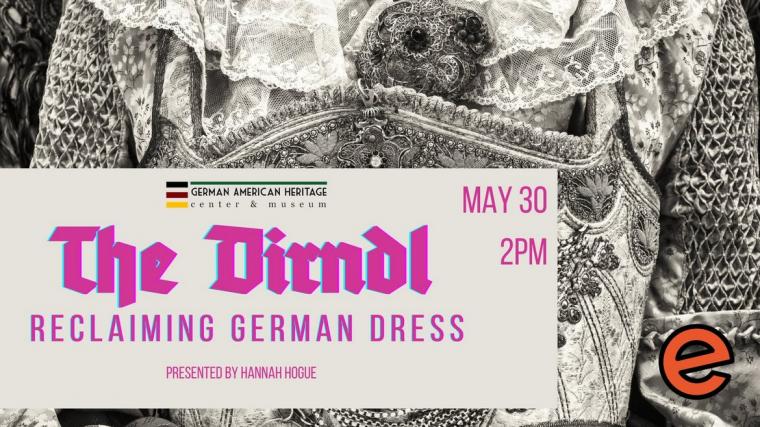
The German American Heritage Center presents “The Dirndl: Reclaiming German Dress" -- May 30.
Sunday, May 30, 2 p.m.
Presented by the German American Heritage Center
The culmination of an Illinois State University Honors Program project six months in the making, the German American Heritage Center's virtual presentation The Dirndl: Reclaiming German Dress will, on May 30, find Hannah Hoge discussing heritage, culture, and ancestry through study of traditional German dress, with specific insight into the origins of this clothing, its use in Nazi propaganda, and how the symbol of the dirndl can be reclaimed to express German pride.
The dirndl is a feminine dress that originated in German-speaking areas of the Alps, and is traditionally worn by women and girls in southern Germany, Austria, Liechtenstein, Switzerland, and Alpine regions of Italy. A dirndl consists of a close-fitting bodice featuring a low neckline, a blouse worn under the bodice, a wide high-waisted skirt, and an apron. Regarded as a folk costume in German Tracht, the dirndl developed as the clothing of Alpine peasants between the 16th and 18th centuries, and today, it is generally considered the traditional dress for women and girls in the Alps, with particular designs associated with different regions. (The traditional masculine tracht counterpart of the dirndl is Lederhosen.) In the late 19th century, the dirndl was adapted by the upper and middle classes as a fashion mode, and subsequently spread as a mode outside its area of origin. There are many varieties of adaptations from the original folk designs, and the dirndl is also worn as an ethnic costume by German diaspora populations in other countries.

In the 1930s, however, German traditional costume, including the dirndl, was instrumentalized by the Nazis as a symbol of pan-German identity in the countries under Nazi rule. The dirndl was consequently used to promote the Nazi ideal of the German woman. Following the way, the dirndl declined in popularity in Germany and Austria, particularly in larger cities. Its image had been tarred by association with the Nazis and conservative political views, and the dress was widely regarded as old-fashioned or rustic by many, especially those connected with the fashion industry. Nevertheless, many others continued to wear the dirndl as a dress for festive occasions, both in the countryside and in cities such as Munich, and were regarded as suitable clothing for attending church, public holidays, Oktoberfest, and other festive occasions. A wider revival of interest came with the 1972 Summer Olympics in Munich. Led by Silvia Sommerlath, the hostesses wore sky-blue dirndls as a promotion of Bavarian identity, and culture historian Simone Egger stated, “As [Sommerlath] in 1972 made headlines as an Olympia hostess in a dirndl, then every woman wanted to have a dirndl.”
Hannah Hoge's virtual program The Dirndl: Reclaiming German Dress will be presented at 2 p.m. on May 30, a limited number of in-person seats will be available for the viewing, and donations to the free event are greatly appreciated. For more information, call (563)322-8844 and visit GAHC.org.








